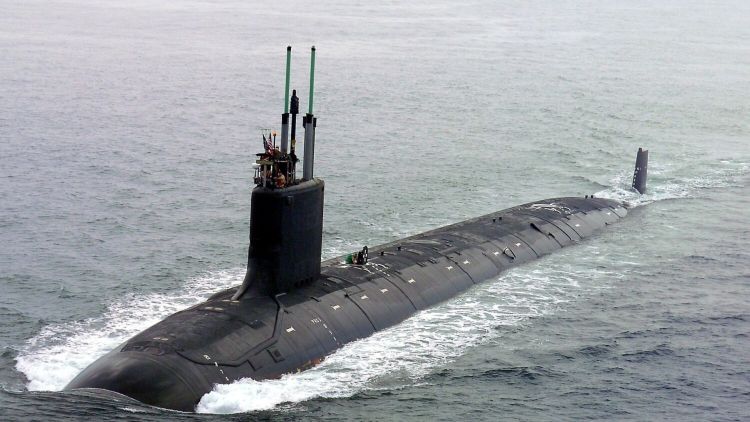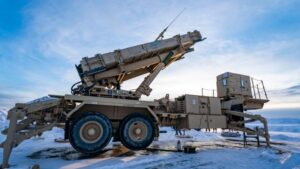Introducing the Block V Virginia
The Virginia-class submarine was designed as a fast-attack submarine, more affordable than the $2.8 billion per unit Seawolf-class submarine.
Sailors assigned to Commander Navy Region Southwest Harbor Patrol escort as Virgina-class fast-attack submarine out of San Diego Harbor during a high-value transit. (U.S. Navy photo by Mass Communication Specialist Seaman Apprentice Conor Minto/Released / Wikimedia Commons)
Only three Seawolf submarines were ever made due to their high cost. The Seawolf was impressive, but its price tag became a problem in the post-Cold War era of budget cuts. The Virginia-class submarines, while not exactly cheap at $1.8 billion per unit, are about a billion dollars less expensive than the Seawolf.
Submarines from Block I to Block III of the Virginia class are already in service. Some Block IV Virginias are also operational, and more are on the way. The Block IV is considered a modern submarine, suggesting that the Block V will be even more advanced.
Addressing the Missile Gap with China
The Block V was designed to address the growing missile gap between the US and China. China is currently in the midst of a massive shipbuilding spree and is also boosting its air force and nuclear and conventional arsenals.
At the same time, China is making aggressive territorial claims throughout the Indo-Pacific region. While the US was focused on conflicts in Iraq and Afghanistan, China used the opportunity to build up its military power.
China now has the largest navy in the world and has invested heavily in a stockpile of cruise and ballistic missiles. The US has not kept up with China’s missile proliferation, creating a significant missile gap.
China has developed more missiles with a greater range than the US and is nearing a monopoly on intermediate-range missiles in the Indo-Pacific region.
The US could build intermediate-range missiles but chose not to after signing the Intermediate-Range Nuclear Forces Treaty, a Cold War agreement with the USSR that banned missiles with a range of 500 to 5,000 kilometers. China never signed this treaty and can deploy its intermediate-range missiles as it pleases.
The Virginia Payload Module
Recognizing the missile gap, the US withdrew from the Intermediate-Range Nuclear Forces Treaty. The Block V Virginia-class submarine is being developed with the Virginia Payload Module (VPM) to address this issue.
This conceptual drawing shows the new Virginia-class attack submarine now under construction at General Dynamics Electric Boat in Groton, Conn., and Northrop Grumman Newport News Shipbuilding in Newport News, Va. (U.S. D.O.D. graphic by Ron Stern. / Wikimedia Commons)
The VPM is a hull plug that allows the submarine to carry three times as many Tomahawk missiles as the Block IV. This capability will help mitigate the missile gap once the Block V submarines are deployed.
Looking Forward
The Block V Virginia-class submarines represent a significant advancement in naval power.
With their enhanced missile capacity, these submarines will play a crucial role in addressing the missile gap and maintaining US naval superiority. As they begin to enter service, they will ensure that the US Navy remains a formidable force in the face of growing challenges.
__
Disclaimer: SOFREP utilizes AI for image generation and article research. Occasionally, it’s like handing a chimpanzee the keys to your liquor cabinet. It’s not always perfect and if a mistake is made, we own up to it full stop. In a world where information comes at us in tidal waves, it is an important tool that helps us sift through the brass for live rounds.



